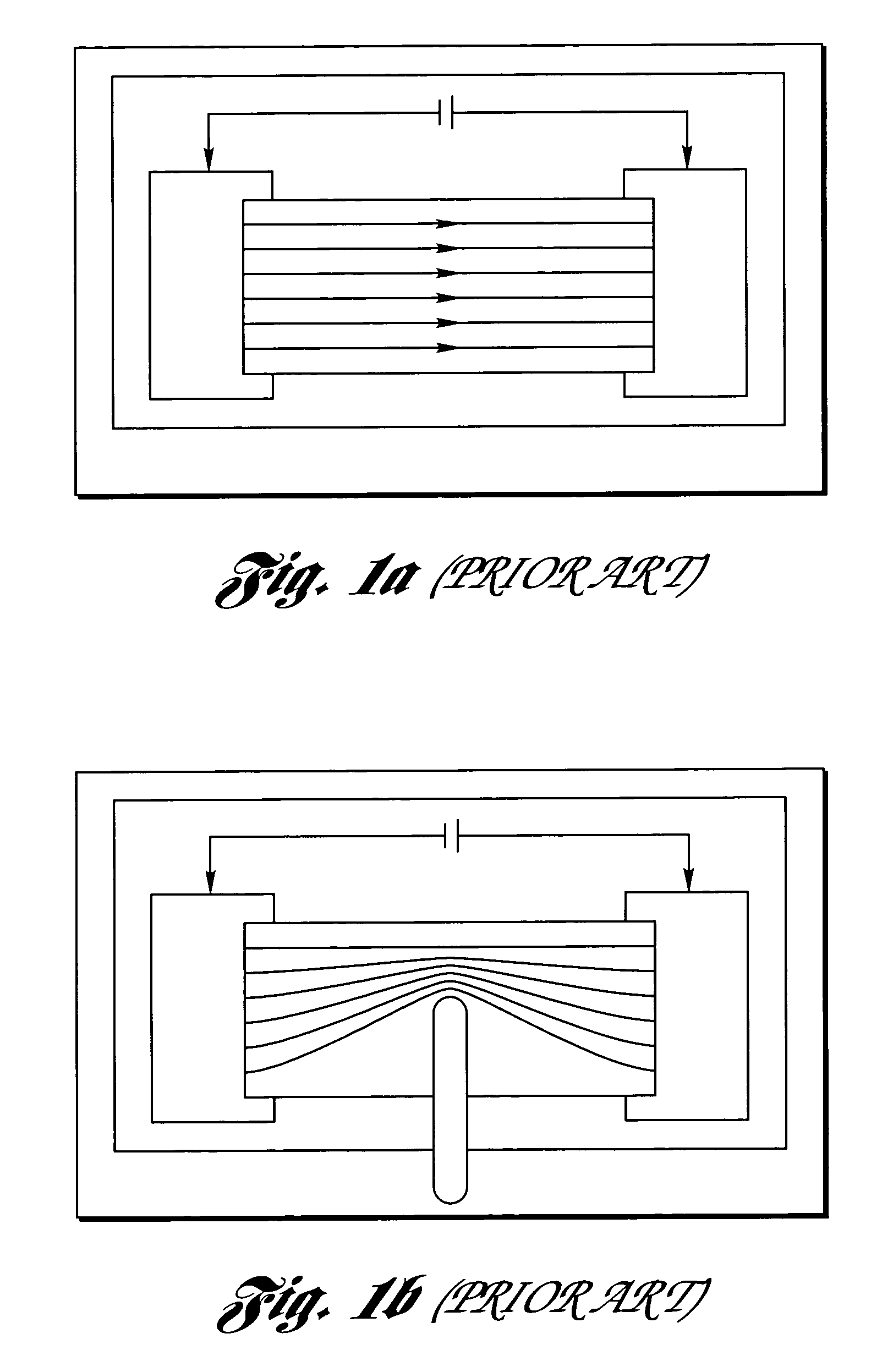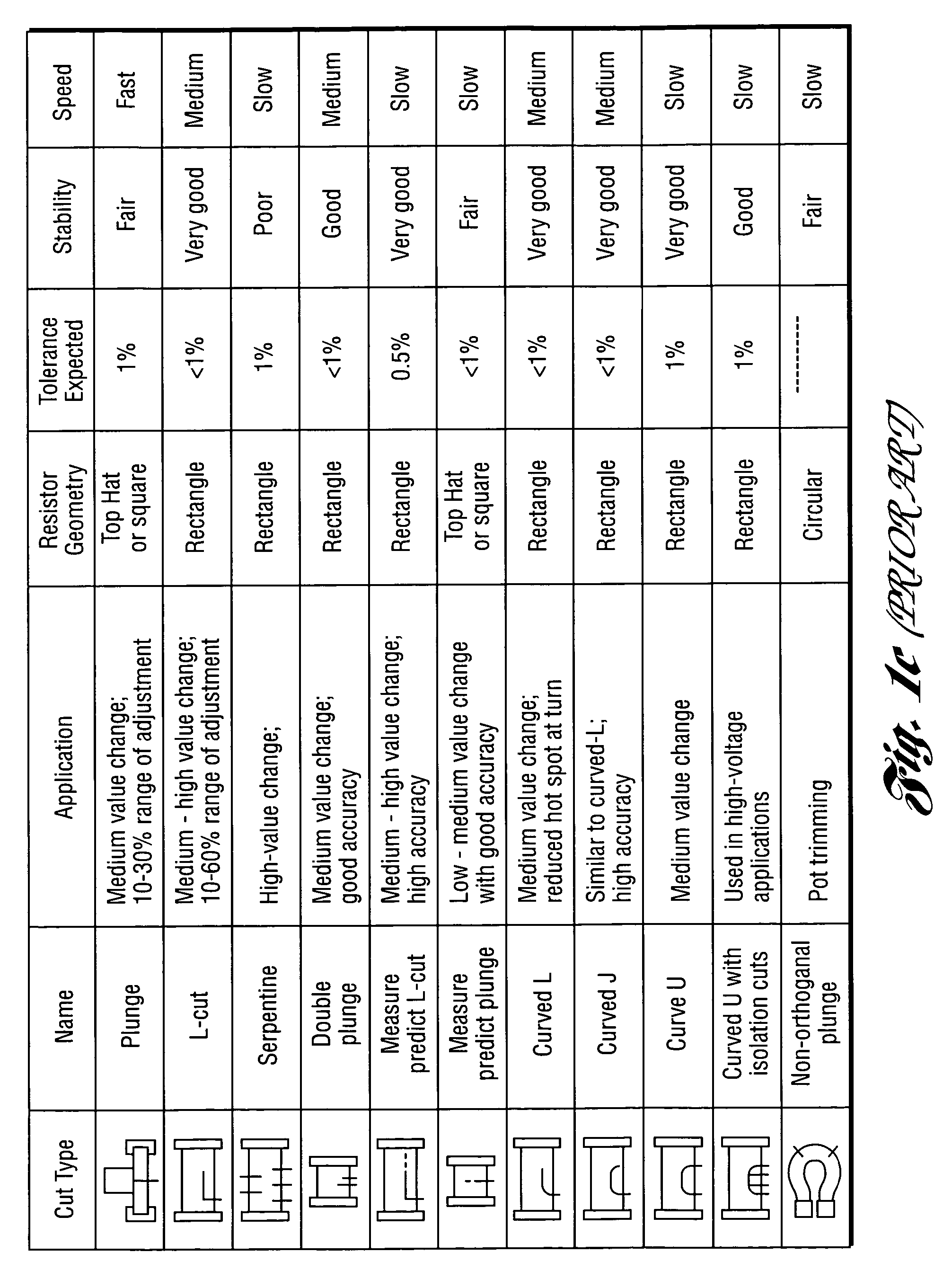Method and system for high-speed precise laser trimming, scan lens system for use therein and electrical device produced thereby
a laser trimming and scanning lens technology, applied in the direction of manufacturing tools, nuclear engineering, therapy, etc., can solve problems such as inability to achiev
- Summary
- Abstract
- Description
- Claims
- Application Information
AI Technical Summary
Benefits of technology
Problems solved by technology
Method used
Image
Examples
Embodiment Construction
)
High-Speed Serpentine Trimming Process
[0085]In resistor trimming, the cuts direct the current flowing through the resistive material along a resistance path. Fine control and adjustment of the cut size and shape change the resistance to a desired value, as illustrated in FIGS. 1a-1c. Typically, chip resistors are arranged in rows and columns on a substrate. FIG. 2a shows an arrangement wherein a row of resistors R1, R2, . . . RN is to be processed. A probe array, having a probe 200 and depicted by arrows in FIG. 2a, is brought into contact 202 with the conductors of a row of resistors. A matrix switch addresses the contacts for a first pair of conductors (e.g.: contacts across R1) and a series of cuts and measurements is performed to change the resistance between the conductor pair to a desired value. When the trimming of a resistor is complete. the matrix switches to a second set of contacts at the next row element (e.g.: R2) and the trimming process is repeated. When a complete r...
PUM
| Property | Measurement | Unit |
|---|---|---|
| diameter | aaaaa | aaaaa |
| diameter | aaaaa | aaaaa |
| wavelength | aaaaa | aaaaa |
Abstract
Description
Claims
Application Information
 Login to View More
Login to View More - R&D
- Intellectual Property
- Life Sciences
- Materials
- Tech Scout
- Unparalleled Data Quality
- Higher Quality Content
- 60% Fewer Hallucinations
Browse by: Latest US Patents, China's latest patents, Technical Efficacy Thesaurus, Application Domain, Technology Topic, Popular Technical Reports.
© 2025 PatSnap. All rights reserved.Legal|Privacy policy|Modern Slavery Act Transparency Statement|Sitemap|About US| Contact US: help@patsnap.com



